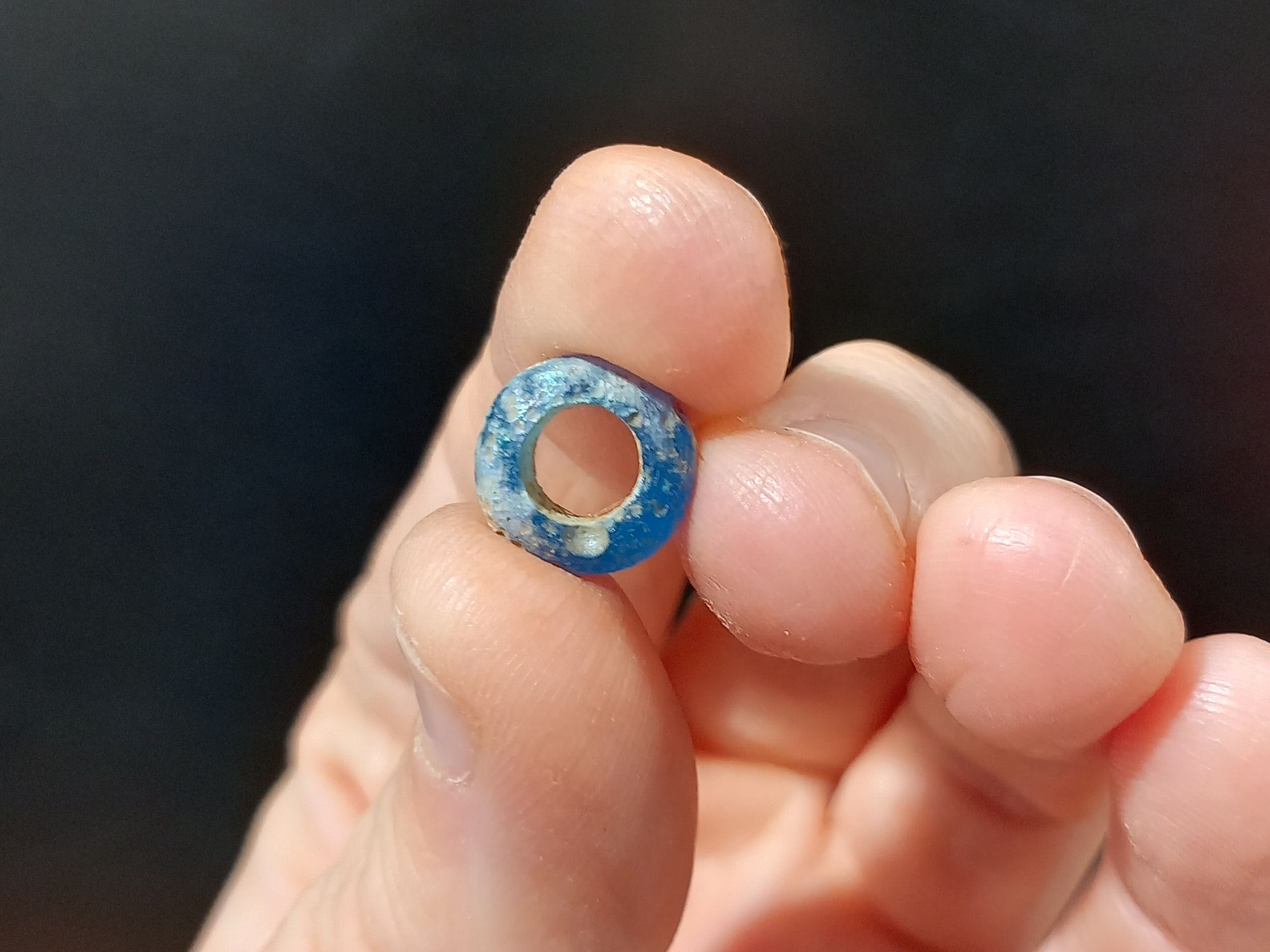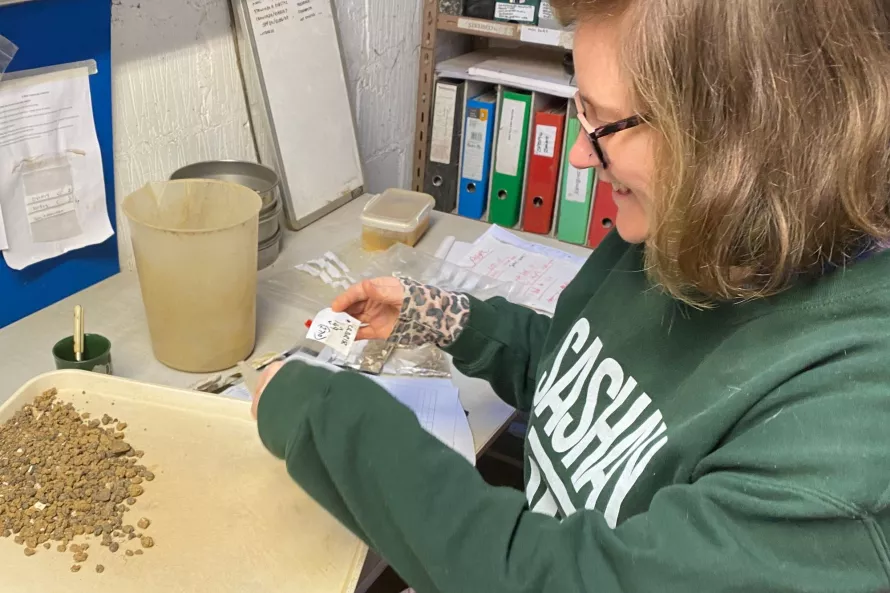As a Finds Supervisor at Oxford Archaeology Cambridge, I help to process and document the material artefacts (finds) left behind by people in the past which we recover during archaeological excavation. This can vary from animal bone discarded after cooking or butchery, to beautifully intricate beads and fine metal objects expertly crafted by our forebears.
For the last six months, I have been processing soil samples from inhumation (full skeletal) burials from Oxford Archaeology Cambridge's sites, including those collected from graves excavated at Hinxton. Taking soil samples from graves is particularly important to do, as grave goods can sometimes be small and easily missed, such as beads from a necklace, as well as any small bones that are difficult to see with the naked eye (inner ear bones are notoriously tricky to spot!) The material objects recovered are vital in helping us understand the everyday lives of the inhabitants on site. For example, they can be indicators of status or help us date the grave to a particular period or culture. This makes my job exciting, as you never know what you might find in a sample that can change the story.
Within one of the skull samples from Hinxton, I spotted something bright blue - a small glass bead.

Close up image of the blue glass bead found during soil sample processing.
And then I noticed a small black object, which I thought was charcoal (which is still exciting - it can tell us a lot about the environment); it was a jet/shale object.

Close up image of the jet/shale ear lobe accessory also found within the burial's soil sample at Hinxton.
The jet/shale object was probably worn as an ear plug (commonly known as a stud) in the individual’s ear lobe. There are other examples of these objects from the Cambridgeshire area, including at Over and most recently, Worts Causeway in 2021, all found with human skeletal remains. The presence of the blue glass bead is exciting in more ways than one – finding a bead is always thrilling, but considering the date of the burial, the pigment used within the glass is most likely came from the Middle East or the Mediterranean. These objects help us to see the fascinating commonalities in cultural practices between these different sites, suggesting networks of not only material but of taste and behaviour. It seems that our ancestors experienced cultural trends just like we do today (albeit maybe not quite as fast paced as our current trends, I grant you!)
This particular skeleton was buried within a ring ditch of a Bronze Age barrow at Hinxton. This type of burial practice is not uncommon around these prehistoric monuments, and there are many theories as to why our ancient ancestors used these ditches to bury their dead. Sometimes, these individuals are revealed to be related to the person buried at the centre of the mound, whilst (more commonly) others are not, and are thought to be later settlers wishing to stake a claim to the land or its past inhabitants through these visible monuments within the landscape. There are many theories around the different burial practices of the Bronze Age, and new excavations like Hinxton help archaeologists to understand more about this enigmatic period and the intentions behind these burial rituals.
Written by Hannah Pighills
Bibliography
Henderson, J (1988), 'Glass production and Bronze Age Europe', Antiquity, 62: pp.435-51.
Other posts in this collection
Read our latest posts about the archaeological investigations at Hinxton.

